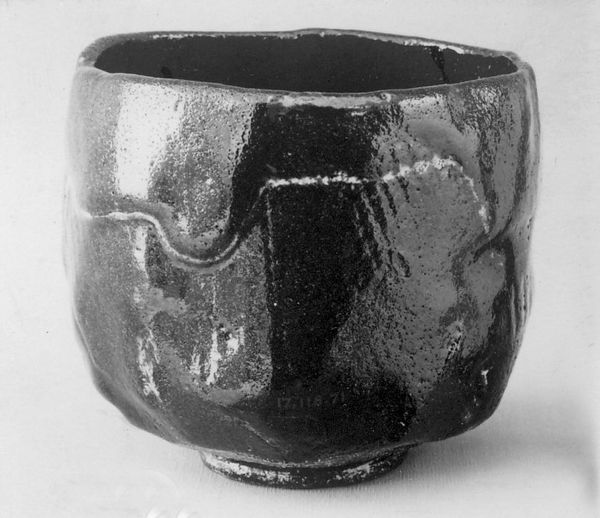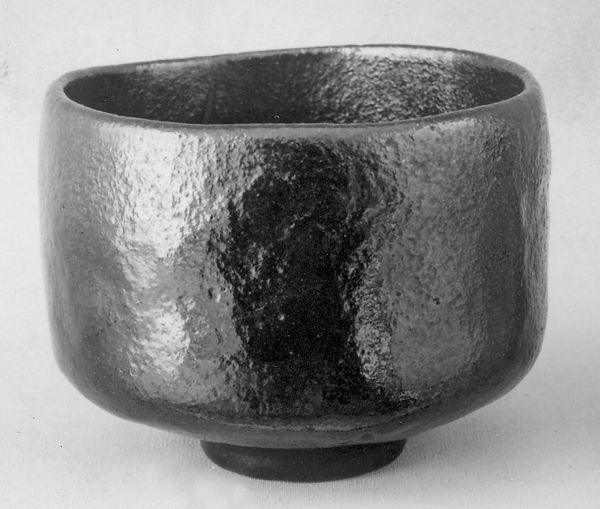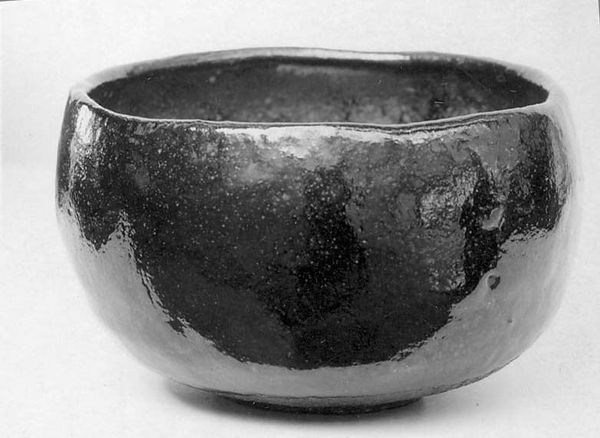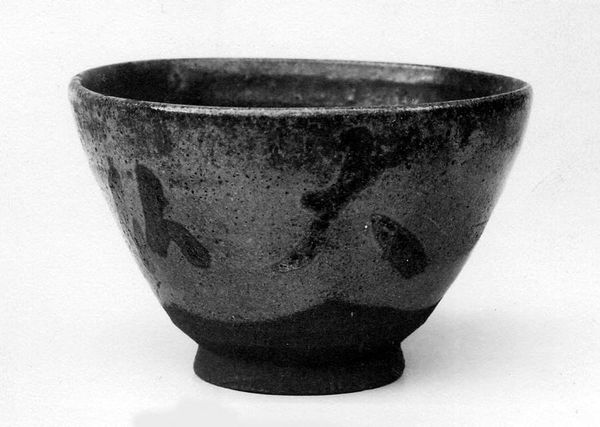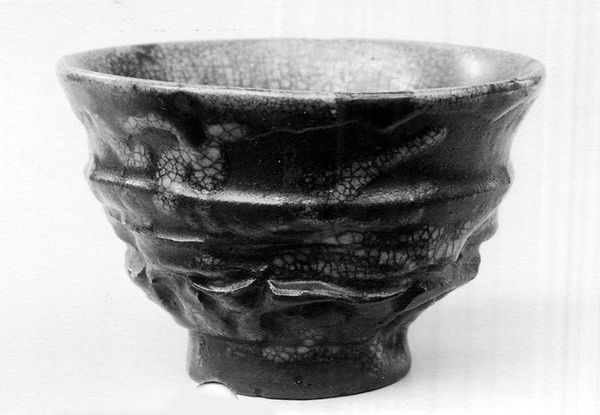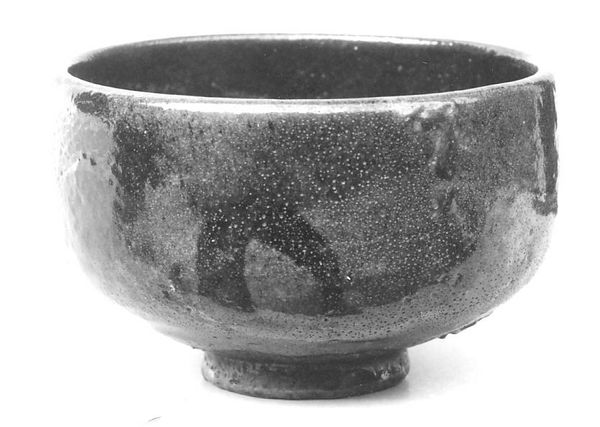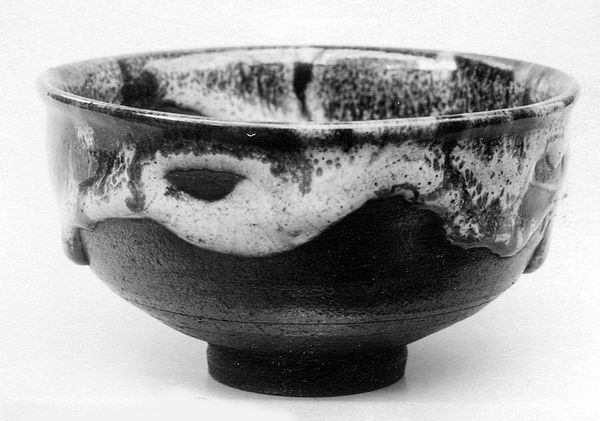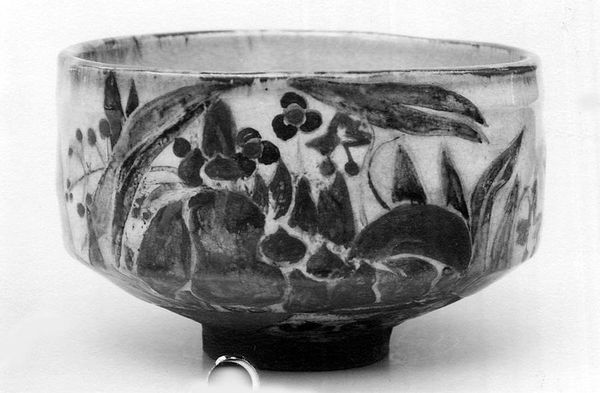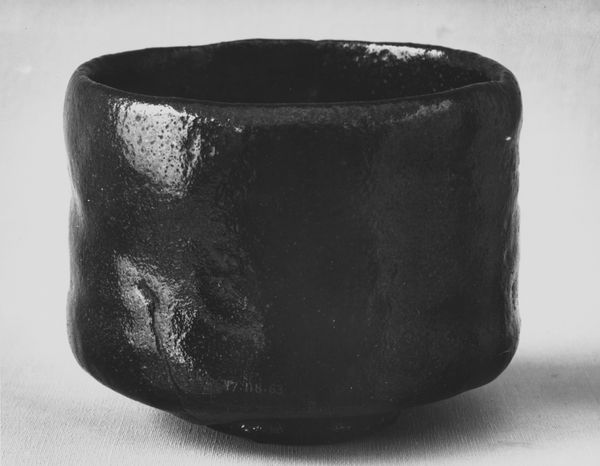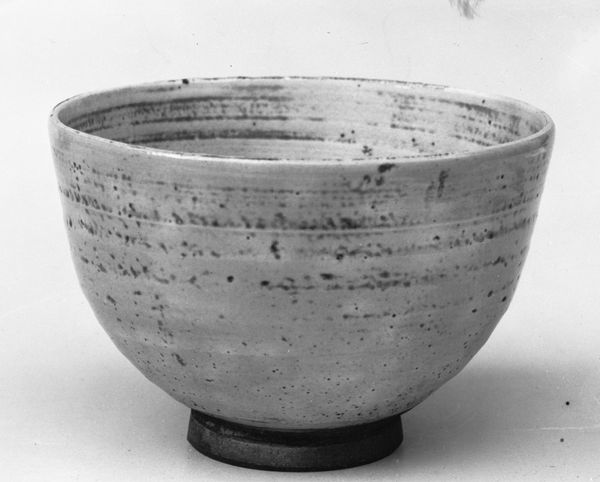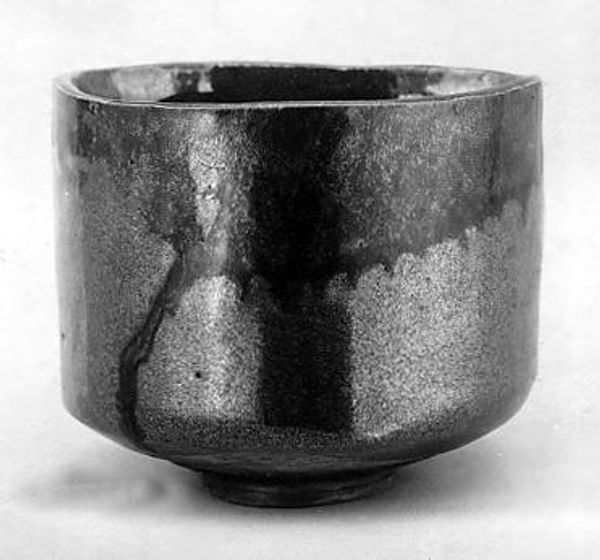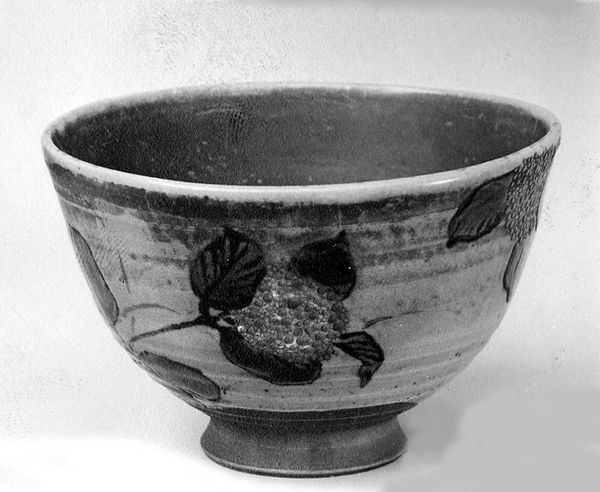
ceramic, earthenware
#
asian-art
#
ceramic
#
japan
#
form
#
earthenware
#
stoneware
#
geometric
Dimensions: H. 3 in. (7.6 cm); Diam. 4 1/4 in. (10.8 cm)
Copyright: Public Domain
Editor: So here we have a ceramic "Teabowl" by Keinyu, made sometime between 1842 and 1862. The uneven surface and simplistic geometric patterns give it an almost folksy feel. What stands out to you about this particular stoneware piece? Curator: I'm immediately drawn to the labour involved in its creation. Consider the geological origin of the earthenware clay, the hands that shaped it, the controlled inferno of the kiln… Every stage relies on material transformation, impacting both the object and the artisan. Editor: So you see the artistic value stemming from the production process itself, rather than any inherent aesthetic quality? Curator: Precisely! This wasn't created in a vacuum; the teabowl is deeply rooted in the socioeconomic conditions of its time. Think about the cultural significance of tea ceremonies in Japan, and how they influenced the value placed on even the most utilitarian objects. How does the making affect consumption here? Editor: It adds another layer, recognizing all the effort. Would you consider it a commentary on consumerism even? Curator: It certainly pushes against notions of mass production and disposability. Each imperfection is a testament to its unique creation, a deliberate act in opposition to the homogeneity of industrial outputs. The evidence of handcraft slows down use: We consume less hastily when we perceive all of that past activity. Editor: That's fascinating. I had only considered it as a simple bowl. It makes me consider not only the function but also the entire backstory of its materiality. Curator: Indeed. By examining the journey of materials and labor, we can uncover a deeper understanding of art’s social context and purpose. This teabowl has a much larger story to tell.
Comments
No comments
Be the first to comment and join the conversation on the ultimate creative platform.
